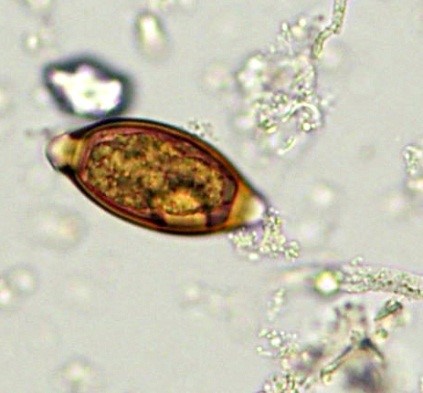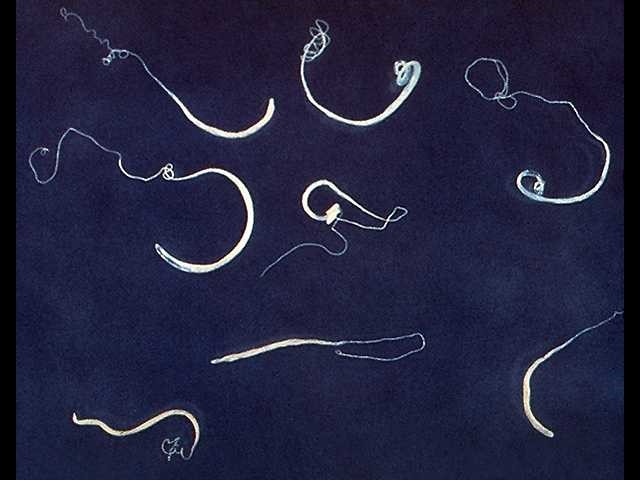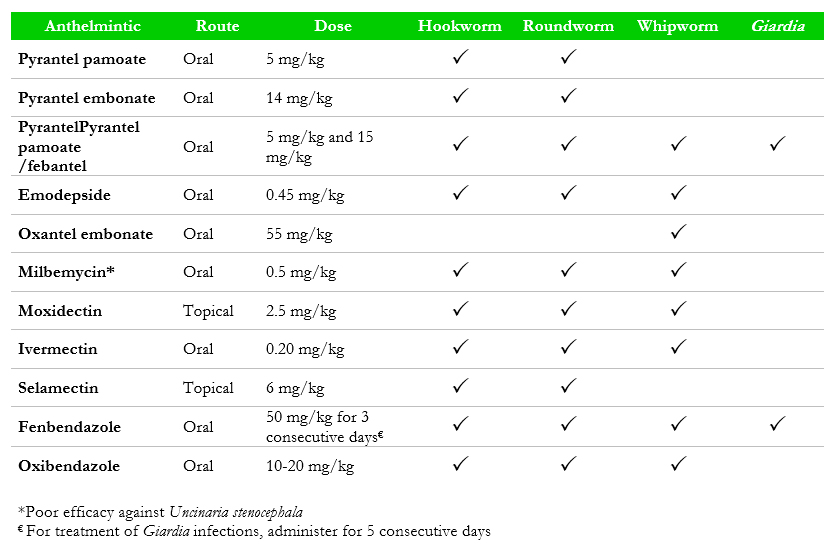Whipworm
(Trichuris vulpis)
Trichuris vulpis is a whipworm of dogs, also found in foxes and coyotes. Heavy infections may produce signs of large bowel diarrhoea. Dogs become infected when they ingest infective eggs.
Distribution
Worldwide.
Clinical signs
Light whipworm infections are usually asymptomatic. Heavy infections, even in adult animals can produce clinical signs of large bowel diarrhoea (e.g. tenesmus) and faeces may contain mucous and fresh blood. Anorexia, weight loss, colic and anaemia may occur. Some cases have mimicked Addison’s disease (primary adrenal insufficiency and hypoadrenalism).
Diagnosis
Because of the long pre-patent period of 10-12 weeks, T. vulpis eggs are not commonly found in the faeces of puppies. Dogs however, may show clinical signs before eggs are shed in faeces. Diagnosis is by visualisation of the characteristically bi-plugged,thick-shelled egg (Fig 1) on centrifugal faecal flotation (SOP 2) using a flotation solution with a SS.G. of 1.25 e.g. sugar solution. Alternatively, if a centrifuge iss not available, a standard faecal flotation (SOP 1) is recommended (S.G. 1.20). Adults have a characteristic ‘whip’ shaped body with a long thin anterior end embedded in the mucosa and a stout posterior end, which is free in the lumen (Fig 2).

Figure 1 Trichuris vulpis egg on faecal flotation. (Image credit: Dr. T. Inpankaew)

Figure 2 Trichuris vulpis adult worms. (Image credit: The University of Melbourne parasitology image library)
Treatment
For anthelmintic treatment options refer to Table 1.
Anthelmintic therapy should be combined with supportive care (e.g. fluid and electrolyte therapy) where necessary.
Table 1 Routes of application, dose and efficacies of commonly utilised anthelmintics against the primary gastrointestinal parasites of dogs.
Control
Repeat treatments in 2.5-3 months to destroy developing larvae as they mature.
For further control options, refer to the General Considerations and Recommendations section.
Public health considerations
None.

